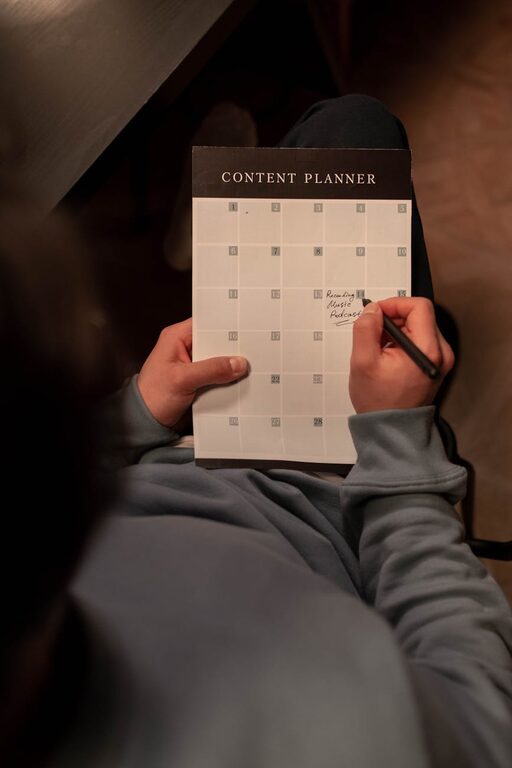
Creating a weekly reset routine can be a game-changer for maintaining balance, reducing stress, and increasing productivity. By setting aside regular time to pause, reflect, and prepare, you’ll feel more organized and ready to take on the week ahead. Here’s a clear, friendly guide to designing a weekly reset routine that fits your lifestyle.
What Is a Weekly Reset Routine?
A weekly reset routine is a dedicated time block each week where you unplug from usual tasks and focus on regrouping your mind, body, and environment. It allows you to release built-up tension, review your progress, and set clear goals for the coming week.
Think of it as hitting the refresh button—a chance to tidy up, prioritize, and create space for what matters most.
Why a Weekly Reset Routine Matters
– Reduces overwhelm: Regular resets prevent tasks and stress from piling up.
– Boosts clarity: You gain insight into what worked and what needs adjusting.
– Increases motivation: Starting fresh each week helps maintain momentum.
– Encourages self-care: It includes moments to prioritize your well-being.
– Improves time management: Weekly planning helps you allocate time wisely.
By designing a routine that suits you, a weekly reset can become a key habit to improve both your productivity and well-being.
Step 1: Choose the Best Time for Your Reset
Find a day and time that naturally fits your schedule. Many people prefer Sunday evenings or Monday mornings, but any time that feels calm and uninterrupted works well.
Tips for selecting your reset time:
– Pick a consistent day each week to build routine.
– Allocate 30 minutes to an hour—enough to cover your main tasks without feeling rushed.
– Avoid times when you’re typically distracted or tired.
Step 2: Set Your Reset Goals
Decide what you want to include in your weekly reset. Common goals are organizing your space, reviewing tasks, planning ahead, and including rest activities.
Here are some typical elements of a reset routine:
– Declutter and tidy: Clear your work area or living space.
– Review the past week: Reflect on accomplishments and challenges.
– Plan upcoming tasks: Write out priorities and deadlines.
– Prepare meals or groceries: Save time during busy days.
– Self-care: Incorporate activities like meditation or light exercise.
– Digital cleanup: Clear email inbox or organize files.
Choose elements that help you feel recharged and organized.
Step 3: Create a Step-by-Step Routine
Having a clear list makes it easier to follow through. Here’s an example weekly reset outline:
Sample Weekly Reset Routine
- **Tidy up (10 minutes):** Pick up clutter in your work or living area.
- **Review your calendar and to-do list (10 minutes):** Look over last week and note what’s pending.
- **Plan the week ahead (10 minutes):** Prioritize key tasks and schedule appointments.
- **Meal prep or grocery list (10 minutes):** Decide meals and create a list.
- **Self-care activity (10–15 minutes):** Do something relaxing like stretching, journaling, or breathing exercises.
You can adjust the time spent on each step depending on what feels right for you.
Step 4: Gather Your Tools and Materials
Prepare any supplies you’ll need to make your reset efficient and enjoyable. These might include:
– Planner or digital calendar
– To-do list app or notebook
– Cleaning supplies or organizers
– Meal planning templates or cookbooks
– Journaling materials or meditation apps
Having everything within reach reduces distractions and helps maintain focus.
Step 5: Stay Flexible and Patient
Your first attempts may not be perfect, and that’s okay. Allow your routine to evolve naturally. Here are some tips to stay consistent and adapt as needed:
– Keep your reset routine simple at the start.
– Adjust time or tasks based on what feels overwhelming or unnecessary.
– Celebrate small wins when you complete your reset.
– Remind yourself of the benefits to stay motivated.
Bonus Tips for a Successful Weekly Reset
– Set a reminder: Use a calendar alert to prompt you.
– Turn off distractions: Silence notifications and find a quiet space.
– Pair it with a habit: Link your reset to another weekly habit, like after your Sunday coffee.
– Involve others: Share the routine with family or friends for mutual support.
– Reflect regularly: Every month, review and tweak your routine.
Final Thoughts
A weekly reset routine helps create space for intentional living. It strengthens your ability to stay organized, focused, and balanced. The key is designing a routine that works for your schedule and lifestyle—one you’ll look forward to rather than see as a chore.
Start small, experiment, and watch how this simple habit can bring calm and clarity to your weeks. Your future self will thank you!
